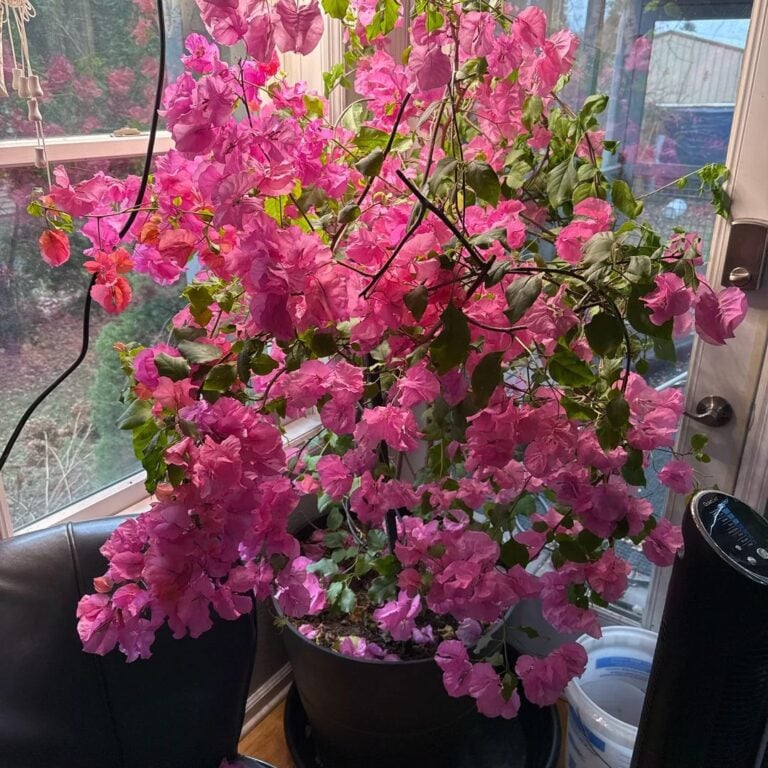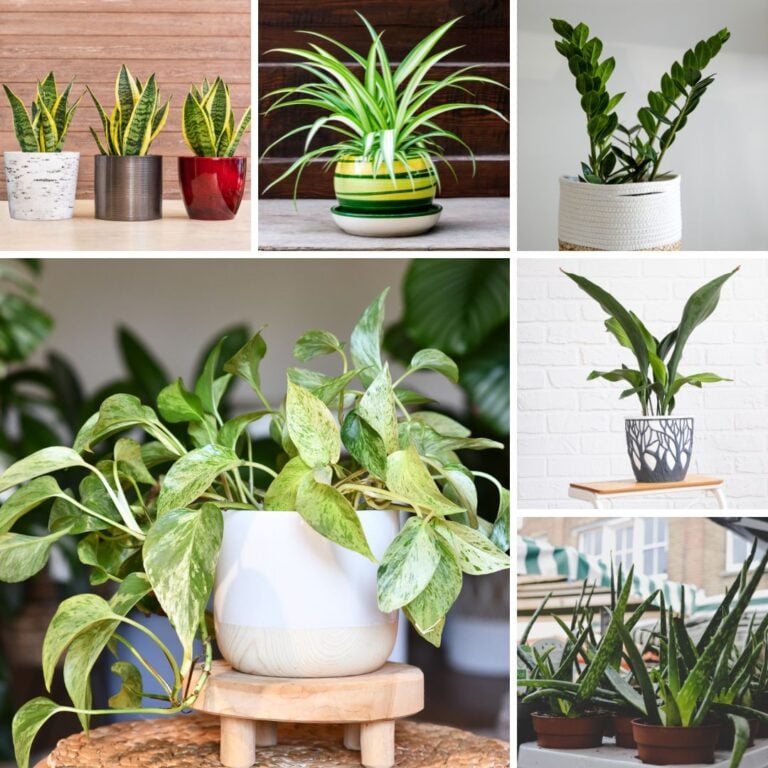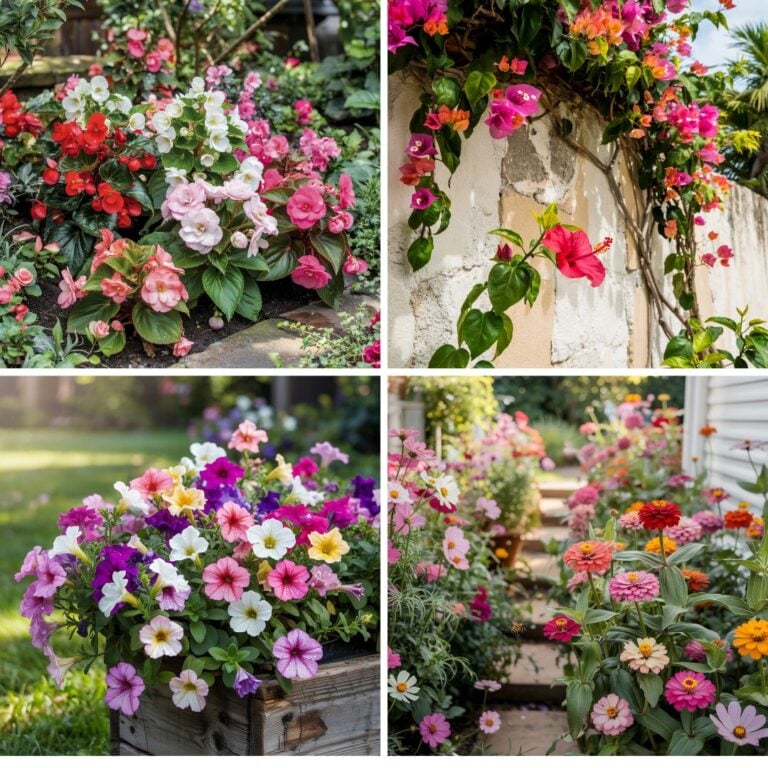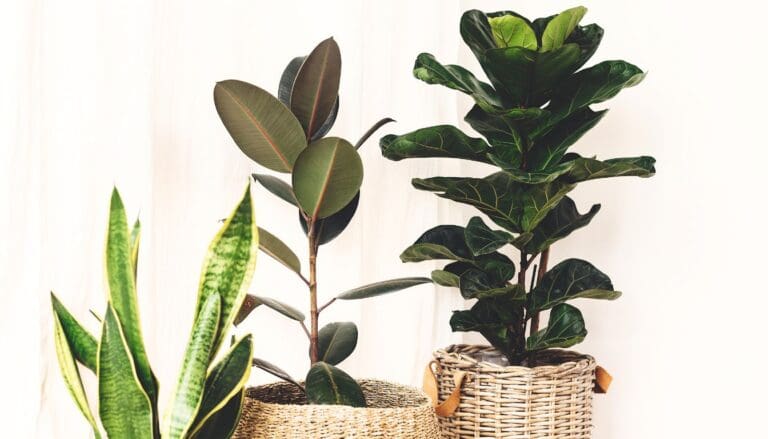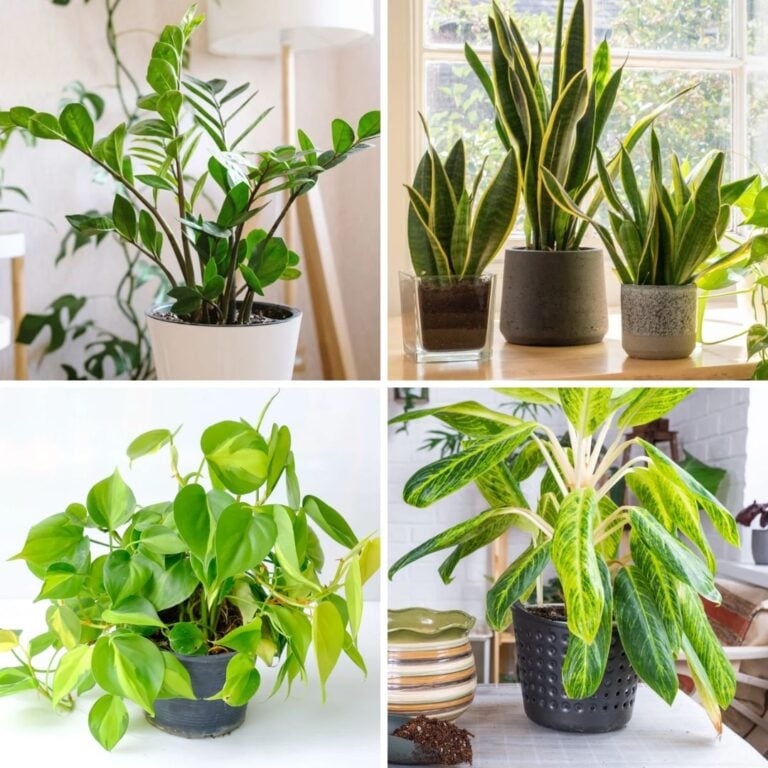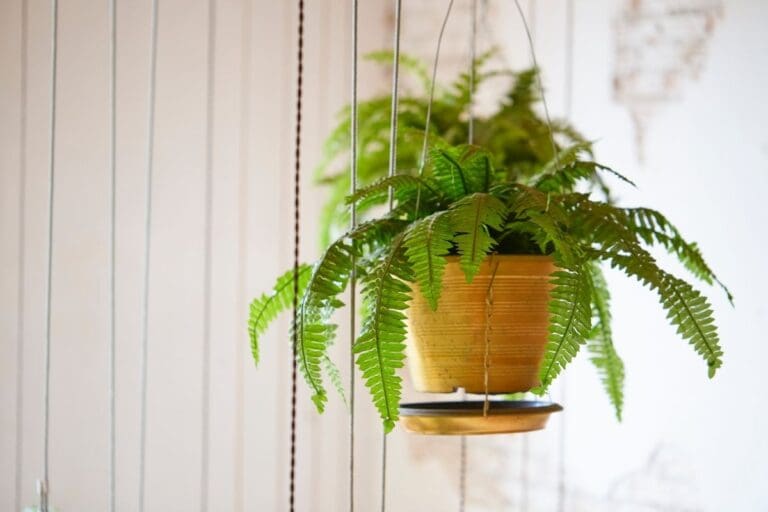9 Houseplants That Don’t Mind Dry Winter Air
When the heat kicks on in winter, the air inside my home gets dry fast.
That dry air makes it tough for a lot of plants to stay happy, but there are a handful that just don’t seem to mind.
I’ve found that picking the right houseplants makes it so much easier to keep greenery thriving all winter long.
I like knowing which plants can stay strong even when the air feels dry.
Here’s a mix of hardy options, why dry air matters, and a few simple tricks I use to keep plants happy through the colder months.
Please note: Simplify Plants is reader-supported. As an Amazon Associate, I earn from qualifying purchases made by our readers with no extra cost added to you all! Some links in the post are affiliate links and I get a commission from purchases made through links in the post.
1) Snake Plant
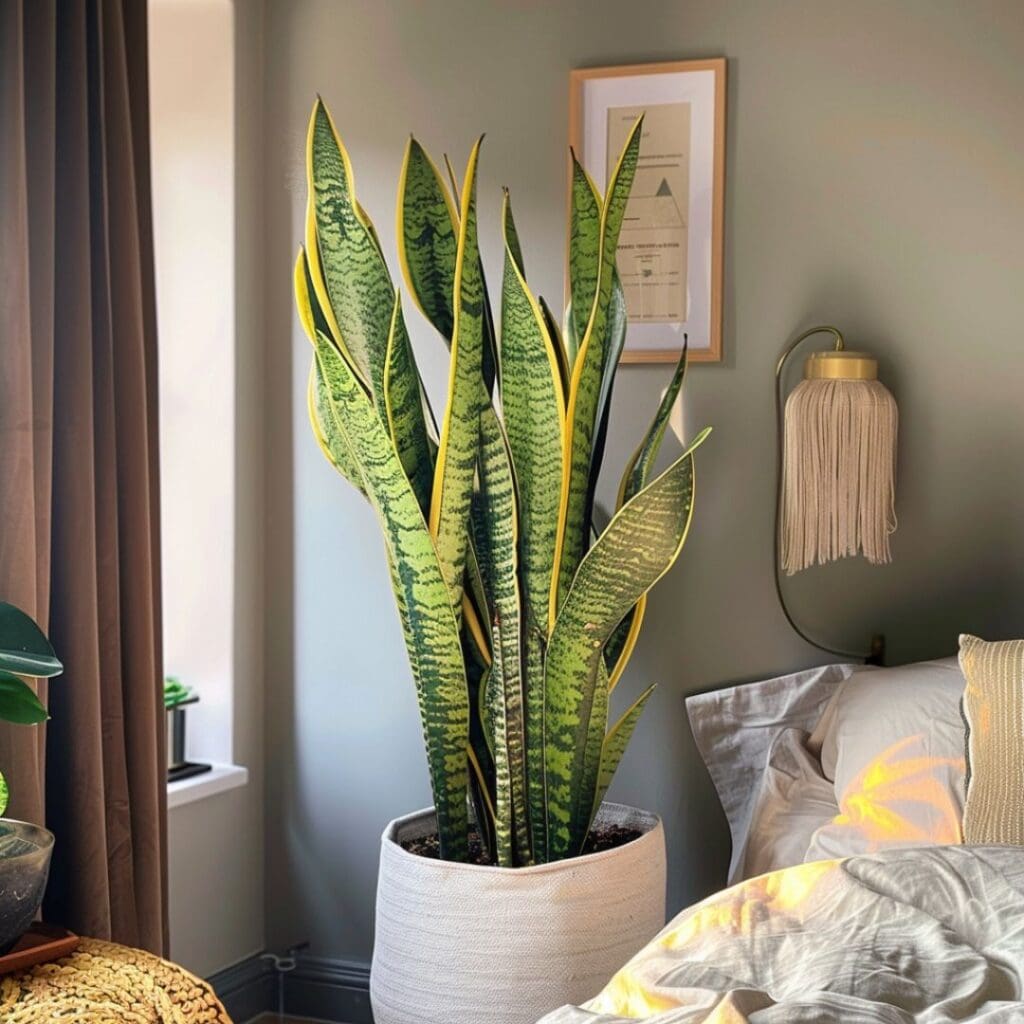
I like keeping a Snake Plant around because it’s honestly one of the easiest houseplants to care for.
It doesn’t need a lot of fussing over, which is perfect for me when I’m busy or forgetful.
This plant grows well in dry indoor air, so I don’t worry about running a humidifier in winter. The thick, upright leaves store water, so it’s pretty forgiving if I forget to water it for a week or two.
I usually put mine in a corner with indirect light, but honestly, it does fine in low light too. That kind of flexibility makes it easy to squeeze into just about any room.
When I water my Snake Plant, I always let the soil dry out first. Too much water is a no-go—it can cause root problems, so I keep things on the dry side.
The tall green leaves with yellow edges give a clean, modern look that I really like. It feels fresh and stylish without needing constant attention.
2) ZZ Plant
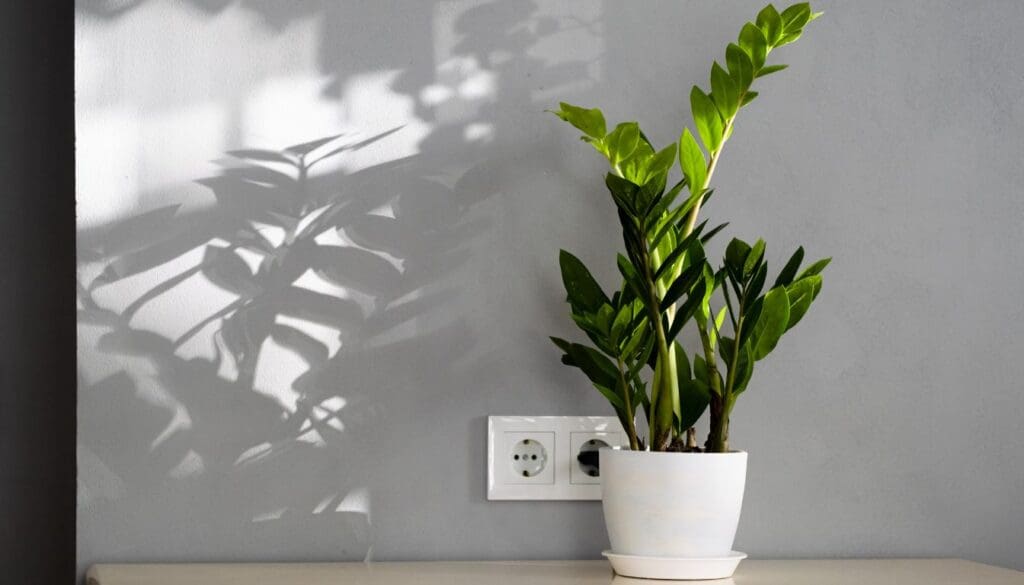
The ZZ Plant is honestly a lifesaver for me. It stays green even when the air is dry in winter, and I don’t have to stress if I skip a watering.
Its thick, waxy leaves hold moisture, so it handles low humidity like a champ. Even when the heat’s blasting, it still looks good. I kind of love having it in my living room.
I keep my ZZ Plant in indirect light, and it just keeps on going. It doesn’t demand a sunny window, which is nice for those awkward spots.
Watering is easy—I just wait until the soil feels dry before I give it a drink. Too much water can cause root problems, so it’s better to err on the dry side.
It grows slowly, which means I don’t have to repot it all the time. The upright stems look tidy and work with any décor, honestly.
For me, the ZZ Plant is a winter staple. It’s attractive, super low-maintenance, and I don’t have to worry about it.
3) Spider Plant

A Spider Plant is just so easy, especially in winter. It doesn’t need much from me and still looks fresh even when the air is dry.
The long, arching leaves add a pop of green, and it sends out little “baby” plants I can snip off and repot. It’s kind of fun watching them grow.
I keep my Spider Plant in bright, indirect light, but honestly, it’s fine in lower light too. I just avoid direct sun because brown tips aren’t cute.
When it comes to watering, I let the soil dry out a bit before I water again. It doesn’t like soggy soil, and I’ve noticed it’s happier when I don’t overdo it.
The best part? It handles dry indoor air without any drama. No misting, no humidifier—just easy.
4) Pothos

Pothos is probably the plant I recommend the most. It’s one of the easiest plants to care for and grows well in low light.
Dry air in winter? Not really a problem for this one. I water it when the soil feels dry, and it perks right back up.
The trailing vines look great draped from a shelf or hanging basket. I like trimming the vines and rooting the cuttings—free plants, anyone?
Pothos stays green even when my house feels dry. No need for misting or special tricks to keep the leaves looking good.
Because it’s so adaptable, I move it around the house all the time. It just doesn’t seem to care.
5) Cast Iron Plant
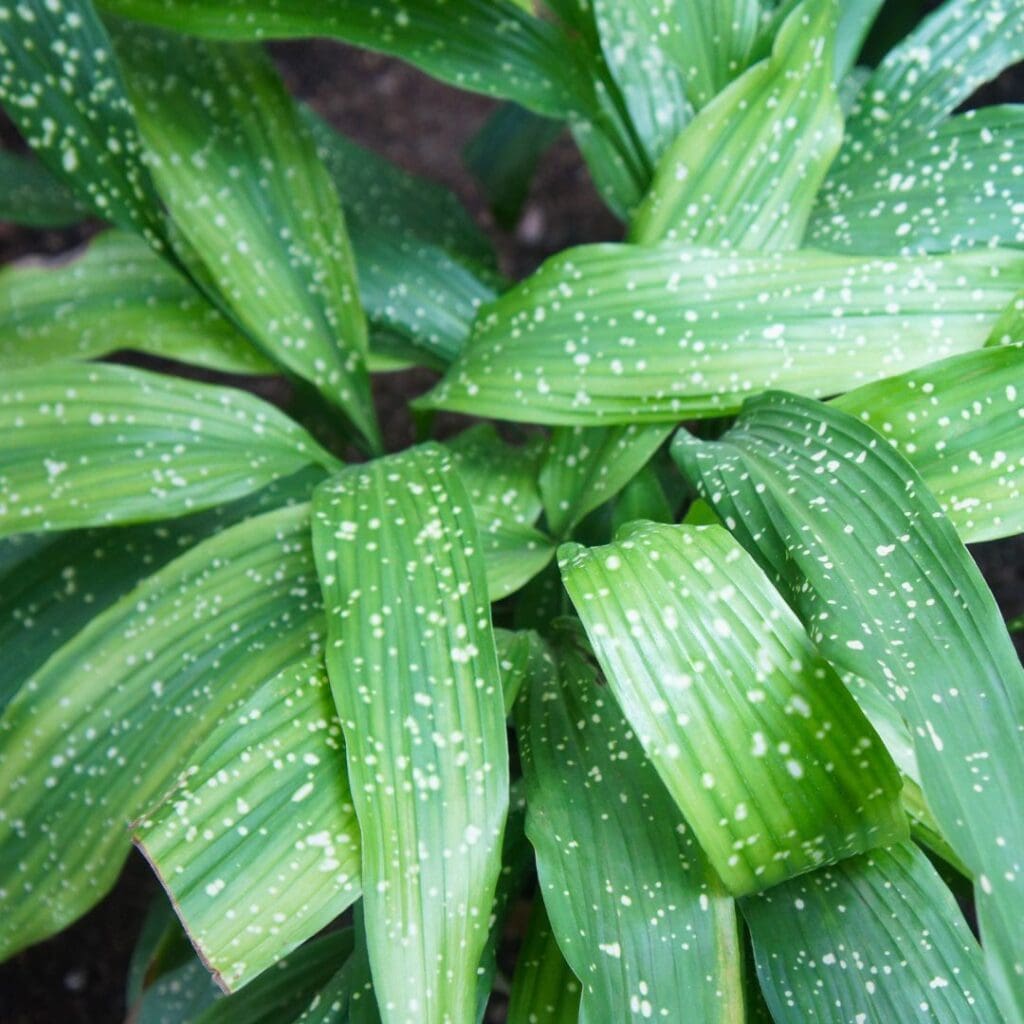
The Cast Iron Plant is exactly what the name suggests—tough as nails. It stays strong even when winter air is dry, and I never see it wilt.
It’s got dark green leaves that look fresh all year and grow upright, making a nice background for other plants. I like the steady color it brings to my space.
I water mine only when the soil feels dry. It doesn’t ask for much, honestly. Low maintenance plants like this are a lifesaver.
It grows well in low light too, so I can stick it in a hallway or corner and it’s still happy. That’s convenient.
Extra humidity? Not needed. Even when the heater is blasting, it doesn’t seem to care.
It grows slowly, but I actually prefer that. Less repotting, less fuss.
6) Chinese Evergreen

The Chinese Evergreen is super easy to care for. If you’re busy or just not in the mood for needy plants, this one’s a solid choice.
It handles dry indoor air surprisingly well, especially in winter. I never worry about running a humidifier for it.
The leaves come in these cool green, silver, or cream patterns that brighten up a corner. And it doesn’t need direct sun, which is a relief.
I keep mine in low to medium light, and it still grows. It’s kind of nice not having to chase the sunlight around my house.
When watering, I let the soil dry a bit before giving it a drink. Soggy soil is a no-go for this one.
It grows slowly, so I don’t have to repot it much. That’s a win in my book.
It’s low-maintenance and reliable—just what I want in winter.
7) Jade Plant

The Jade Plant is a classic for a reason. It stays strong through dry winter air, and those thick, fleshy leaves hold plenty of water, so I don’t have to worry about it much.
I keep mine in a bright spot near a window. It really does best with plenty of light, and the leaves look way healthier when it gets enough sun.
Watering is straightforward—I let the soil dry out completely before I add more water. Overwatering is a killer for this plant, so I’m careful.
It grows slowly, which is fine by me. Less repotting, and it fits just about anywhere—desk, shelf, windowsill.
With the right care, Jade Plants can live for years. A little light and a careful watering routine really do the trick.
8) Aloe Vera
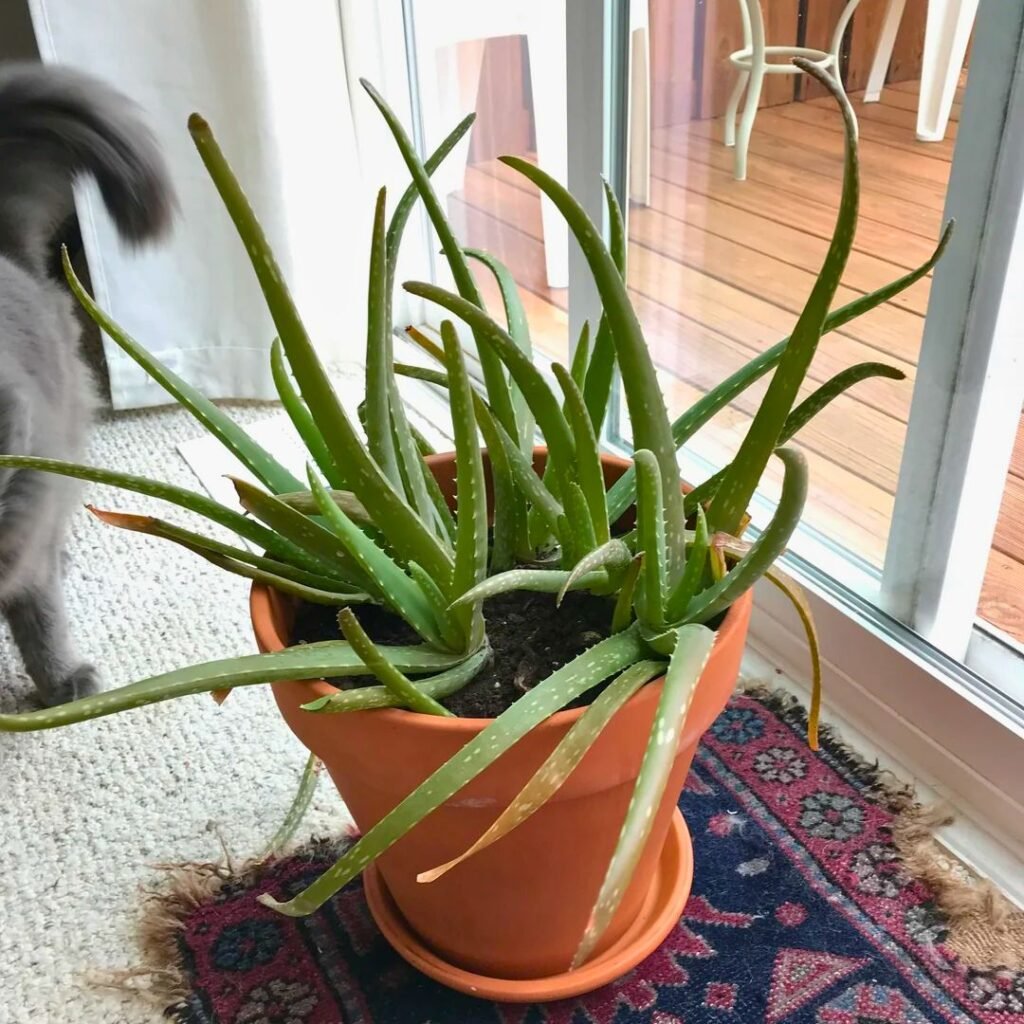
I like having Aloe Vera around because it’s just so easy. It hardly needs any water, which is perfect when winter air gets dry. The thick leaves keep moisture stored, so if I forget about it, no big deal.
It likes bright, indirect light, so I usually keep mine near a sunny window. If it doesn’t get enough sun, the leaves get kind of thin and floppy.
I only water my Aloe Vera when the soil feels dry. Too much water can cause root rot, so I always check the soil first. A pot with good drainage is a must.
One thing I appreciate is how neat and compact Aloe Vera stays. It fits just about anywhere—desk, shelf, you name it.
Aloe Vera is tough and low-maintenance, so I never stress about it when the air in my home is dry. It’s one of those plants that just does its thing.
9) Rubber Plant

The Rubber Plant really makes a statement. Those big, glossy leaves are hard to miss, and it doesn’t take much to keep it happy.
It does well in dry winter air, which is great when the heat’s running nonstop. I don’t bother misting it all the time.
I keep mine in bright, indirect light, and it seems to grow steadily. Direct sun isn’t great for the leaves, so I put it near a window but not right in the sunbeam.
Watering is simple. I let the soil dry out a bit, then give it a good soak. Overwatering can cause root problems, so I always check the soil first.
If it gets too tall, I just trim it back and it bounces right back. The leaves collect dust, so I wipe them with a damp cloth now and then to keep them shiny.
For me, the Rubber Plant is pretty low-stress. It looks great, doesn’t ask for much, and breezes through winter air.
Why Dry Air Matters for Houseplants
Dry indoor air can really change how plants grow and look. Some plants struggle when moisture is low, but others just seem to roll with it.
Effects of Low Humidity on Indoor Plants
When the air gets dry, I notice plants lose water through their leaves much faster. This process—transpiration—makes them thirsty a lot more often than usual.
If I don’t keep up with watering, the leaf tips or edges start turning brown. It’s honestly a bit discouraging to see.
Dry air can also cause wilting, even when the soil isn’t completely dry. The plant just can’t seem to hold onto enough moisture to keep its shape.
Thin-leaved plants, like ferns, are hit the hardest. They lose water quickly and show signs of stress almost immediately.
I’ve also noticed pests, especially spider mites, show up more in dry conditions. These little troublemakers seem to love low humidity, and stressed plants just can’t fight back as well.
How Houseplants Adapt to Dry Conditions
Some plants just handle dry air better. Succulents and cacti, for example, store water in their thick leaves and stems, so they’re not as needy.
Other plants, like snake plants or ZZ plants, have a waxy coating on their leaves. That layer really helps slow down water loss.
Certain plants will actually grow smaller leaves or just fewer of them. Less leaf surface means less water lost—pretty clever adaptation, right?
Honestly, plants from dry regions just seem to thrive indoors during winter. Their built-in traits make them way less fussy about humidity or constant care.
Tips for Keeping Houseplants Happy in Dry Winter Air
When the air dries out, I focus on two things: how I water my plants and how I bump up the humidity around them. Even small tweaks here can really help keep leaves from drying out.
Watering Strategies for Dry Environments
I check the soil pretty often because dry air can fool me into thinking plants need water when they don’t. The top might look dry, but deeper down it can still be damp.
I just stick my finger about an inch into the soil to see if it’s actually dry before I grab the watering can.
Room-temperature water is my go-to. Cold water from the tap in winter feels like a shock to the roots, and I figure, why risk it?
When I water, I go slow until it drains from the bottom of the pot. That way, I know the roots are getting a good soak.
I never let plants sit in standing water. Soggy roots can rot, and that’s a headache nobody wants—especially in winter when everything grows slower.
For plants that like it dry, like succulents, I wait longer between waterings. They honestly seem happier that way.
My simple routine is:
- Check soil before watering
- Use drainage trays but empty them right away
- Adjust frequency based on the plant, not the calendar
This helps me avoid overwatering, which is probably the most common mistake in dry indoor air.
Boosting Humidity Without a Humidifier
I don’t always use a humidifier, honestly. But there are still ways to raise humidity without fancy gadgets.
Grouping plants together is my favorite trick. They share the moisture they release and create a little pocket of higher humidity.
I’ll also put bowls of water near heat sources. As the water evaporates, it adds a bit of moisture to the air.
Another thing I do is set plants on a pebble tray filled with water. The pot sits on the pebbles, not in the water, so roots stay dry but the air gets a nice boost.
Misting? I do it sometimes, but I don’t rely on it. The effect is so short, and too much can lead to leaf spots or even mold.
Instead, I stick to steady methods that keep the air comfortable for longer.
Some easy options I use:
- Pebble trays under pots
- Grouping plants together
- Bowls of water near radiators or vents
These little tricks keep my plants happier, and I don’t have to buy extra equipment.
Frequently Asked Questions
I get a lot of questions about plants that stay healthy in dry homes during winter. Some just handle low humidity, heated rooms, and less watering better than others.
What are some low-humidity indoor plants that thrive in winter?
I keep Snake Plant, ZZ Plant, and Cast Iron Plant around because they do well with barely any moisture in the air. These guys stay strong even when the heat’s running nonstop.
Can you recommend houseplants that are tolerant of dry air?
Definitely. Spider Plant and Pothos are champs. They adapt quickly and don’t seem to struggle much in dry air.
How do I care for indoor plants during the dry winter months?
I only water when the soil feels dry. I also keep plants away from direct heat vents and dust the leaves so they can breathe.
What are the best houseplants for heated indoor environments?
For rooms with heaters, I stick with ZZ Plant and Snake Plant. They handle warm, dry air without losing their color or shape.
Which indoor plants require minimal watering in winter?
My Cast Iron Plant and Snake Plant only need water every few weeks. They store water so well, I barely have to think about them.
Are there any houseplants that actually prefer dry conditions?
Yep, the Snake Plant and ZZ Plant are two that genuinely seem to thrive when the soil gets a bit dry between waterings. Honestly, they don’t appreciate sitting in wet soil at all—kind of picky, aren’t they?
If you’re the forgetful type when it comes to watering, these might just be your new favorites. You can read more about how they grow better with less frequent watering.
Recommended Garden Supplies
| Product Image | Our Recommended Gardening Supplies | Check Offers! |
|---|---|---|
Top Top
Top
Top
Top
Top
Top
Top
Top | rePotme Houseplant and Tropical Classic Potting Soil Mix | Check Offer On Amazon |
 Top
Top
Top
Top
Top
Top
Top
Top | Espoma Organic Indoor Plant Food | Check Offer On Amazon |
 Top
Top
Top
Top
Top
Top
Top
Top | GooingTop LED Grow Light 6000K Full Spectrum Clip Plant Growing Lamp | Check Offer On Amazon |
 Top
Top
Top
Top
Top
Top
Top
Top | Soil Moisture Meter | Check Offer On Amazon |
 Top
Top
Top
Top
Top
Top
Top
Top | Govee Hygrometer Thermometer, Bluetooth Enabled! | Check Offer On Amazon |
 Top
Top | LEVOIT Humidifiers for Large Room(Best For Plants) | Check Offer On Amazon |
 Top
Top
Top
Top
Top
Top
Top
Top | Upgraded DIY Automatic Drip Irrigation Kit, 15 Potted Houseplants Support | Check Offer On Amazon |
 Top
Top
Top
Top
Top
Top
Top
Top | Stainless Steel Heavy Duty Gardening Tool Set | Check Offer On Amazon |
 Top
Top
Top
Top
Top
Top
Top
Top | Bonide Insecticidal Soap | Check Offer On Amazon |
 Top
Top
Top
Top
Top
Top
Top
Top | Bonide 32 oz Spray Neem Oil for Organic Gardening | Check Offer On Amazon |
 Top
Top
Top
Top
Top
Top
Top
Top | Garden Safe Fungicide | Check Offer On Amazon |

